Baccio del Bianco or Luigi Baccio del Bianco
Drawings
Design for a Festival Costume with a Subsidiary Study upper Right of a Head in Profile to the Left
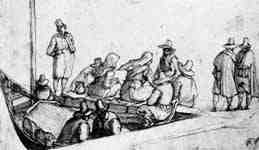
On the quayside waiting farmers
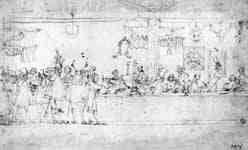
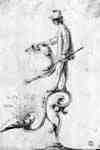
Gardener, standing on a vessel
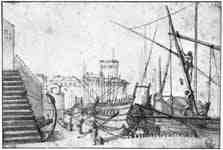
Harbor view with sailing ships
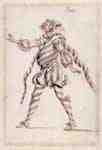
Young man in striped costume "Besso"
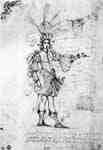
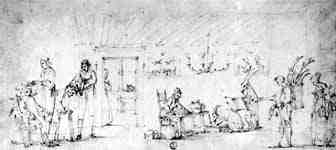
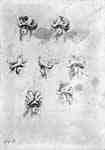
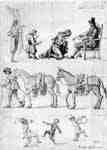

Luigi Baccio del Bianco or Baccio del Bianco (31 October 1604 – July 1657) was an Italian architect, engineer, scenic designer and painter. He was born in Florence where his father, Cosimo del Bianco, sold cloth to the nobility for use in festivals, tournaments, and theatrical performances.[1] He studied painting under Giovanni Bilivert from 1612 to 1620. Baccio's work and letters also show the influence exerted on the painter by Vincenzio Bocaccio of Rome, who came to Florence, delegated as one of the best students of the architect and painter Lodovico Cigoli. He also apprenticed under Giulio Parigi.
In 1620 he visited Germany; on his return he decorated several houses, and painted for churches and theatres. In 1622 he went to Vienna to assist Giovanni de Galliano Pieroni (1586–1654), and later the same year both went on to Prague, where he performed extensive work in fresco, some with help of assistants. He did not stay long, as there is evidence he lived in Milan shortly thereafter and was back in Florence in 1625. In 1651 he was sent to Spain by Grand Duke Ferdinando II de' Medici to fulfill King Philip IV's request for designer for court performances.[2] His work at the Spanish court included scenes and theatrical machinery for La fiera, el rayo y la piedra in 1652 and Andrómeda y Perseo in 1653 (both plays by Pedro Calderón de la Barca).[3] He died at Madrid in 1657. In Spain he was known as Bartolomeo del Blanco, since Baccio is an Italian diminutive for Bartolommeo or Bartolomeo, while Bianco and Blanco are Italian-Spanish equivalents of "white". Accordingly, he shows up as such in certain sources.
See also
Bartolomeo Bianco of Como, (contemporary to him Geneoese baroque architect, conflated with Luigi Baccio del Bianco)
References
Massar, Phyllis Dearborn (1977). "Scenes for a Calderon Play by Baccio del Bianco". Master Drawings 15 (4): 366. Retrieved 2 September 2012.
Massar, Phyllis Dearborn (1977). "Scenes for a Calderon Play by Baccio del Bianco". Master Drawings 15 (4): 365. Retrieved 2 September 2012.
Shergold, N.D. (1967). A History of the Spanish Stage from Medieval Times Until the End of the Seventeenth Century. Oxford: Clarendon Press. p. 280;305.
"Luigi Baccio del Bianco". Retrieved 2009-07-29.
Bibliography
"Science in Contact with Art: Astronomical Symbolics of the Wallenstein Palace in Prague", Alena Hadravová (Research Centre for the History of Science and Humanities of the Czech Academy of Sciences and Charles University), Petr Hadrava (Astronomical Institute of the Czech Academy of Sciences), published in: Science in contact at the beginning of scientific revolution, Ed. J. Zamrzlová, Acta historiae rerum naturalium necnon technicarum, New series, Vol. 8 (2004), pp. 173 – 210. ISBN 80-7037-133-1
----
Fine Art Prints | Greeting Cards | Phone Cases | Lifestyle | Face Masks | Men's , Women' Apparel | Home Decor | jigsaw puzzles | Notebooks | Tapestries | ...
----
Artist
A - B - C - D - E - F - G - H - I - J - K - L - M -
N - O - P - Q - R - S - T - U - V - W - X - Y - Z
Retrieved from "http://en.wikipedia.org/"
All text is available under the terms of the GNU Free Documentation License




